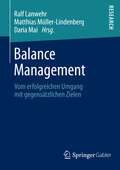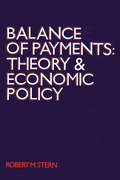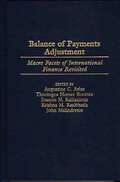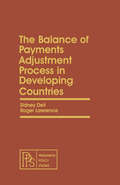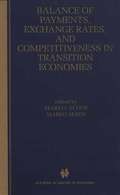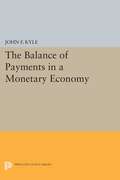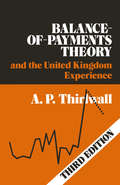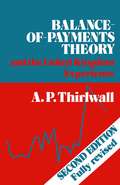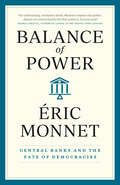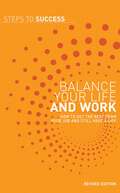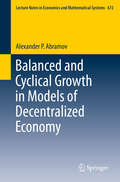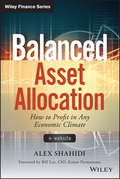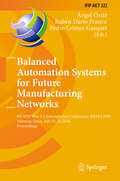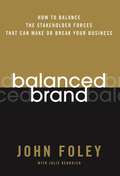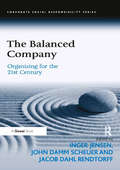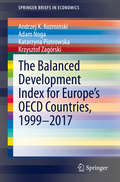- Table View
- List View
Balance Management: Vom erfolgreichen Umgang mit gegensätzlichen Zielen
by Ralf Lanwehr Matthias Müller-Lindenberg Daria MaiUnternehmen müssen viele Ziele verfolgen, die im Widerstreit miteinander stehen: Sie sollen einerseits effizient produzieren, und andererseits innovative Lösungen entwickeln. Sie sollen langfristige Strategien verfolgen und gleichzeitig gute Quartalszahlen vorweisen. Sie sollen zwar das Produktportfolio diversifizieren, sich aber parallel auf ihr Kerngeschäft konzentrieren. Für Führungskräfte stellt sich die Lage ähnlich dar: Sie sollen zwar Zeit- und Kostenvorgaben bindend einhalten, aber zugleich für die Weiterentwicklung, Zufriedenheit und Innovativität ihrer Mitarbeiter sorgen. Sie sollen den Arbeitsfortschritt der Geführten kontrollieren, ihnen jedoch auch Wahlfreiheit über die Art und Weise der Arbeitserfüllung geben. Bisweilen stellen sich die Zielkonflikte sogar als Dilemmata dar, wenn es nämlich unmöglich erscheint allen widerstreitenden Ziele gerecht zu werden. Der vorliegende Band bietet Auswege aus dem Dilemma und konkrete Lösungen in den Bereichen Strategie, Personal, Organisation und Controlling.
Balance of Payments: Theory and Economic Policy
by Robert SternAn original and systematic synthesis of the major postwar developments in theory and policy of balance-of-payments adjustment, this book focuses on the present-day system of pegged-but-adjustable exchange rates and the problems that policy authorities must face if they are to attain full employment, price stability, balance-of-payments equilibrium, and a satisfactory rate of economic growth. The dominate theme of this book is that any system of exchange rates carries with it assumptions about the way it works and how effective the automatic and policy-motivated forces operate to bring about equilibrium in a country's balance of payments. By analyzing balance-of-payments adjustment and policies under alternative exchange-rate systems, and with different assumptions concerning the level of employment and prices, it is possible to embrace a wide variety of contemporary and historical circumstances experienced by individual countries and the world as a whole. In this way the author assesses the economic consequences of the different exchange-rate systems and of the policies that countries may follow to attain their national objectives. In particular it appears to Professor Stern that the international monetary turmoil of the past ten years can be traced to the exchange-rate inflexibilities of the adjustable-peg system and to the creation of excessive reserves under the dollar standard. He demonstrates that the international monetary system must be redesigned to permit greater exchange-rate inflexibility and control over the creation of new international reserve assets.
Balance of Payments: Theory and Economic Policy
by Robert SternAn original and systematic synthesis of the major postwar developments in theory and policy of balance-of-payments adjustment, this book focuses on the present-day system of pegged-but-adjustable exchange rates and the problems that policy authorities must face if they are to attain full employment, price stability, balance-of-payments equilibrium, and a satisfactory rate of economic growth. The dominate theme of this book is that any system of exchange rates carries with it assumptions about the way it works and how effective the automatic and policy-motivated forces operate to bring about equilibrium in a country's balance of payments. By analyzing balance-of-payments adjustment and policies under alternative exchange-rate systems, and with different assumptions concerning the level of employment and prices, it is possible to embrace a wide variety of contemporary and historical circumstances experienced by individual countries and the world as a whole. In this way the author assesses the economic consequences of the different exchange-rate systems and of the policies that countries may follow to attain their national objectives. In particular it appears to Professor Stern that the international monetary turmoil of the past ten years can be traced to the exchange-rate inflexibilities of the adjustable-peg system and to the creation of excessive reserves under the dollar standard. He demonstrates that the international monetary system must be redesigned to permit greater exchange-rate inflexibility and control over the creation of new international reserve assets.
Balance of Payments Adjustment: Macro Facets of International Finance Revisited (Contributions in Economics and Economic History)
by Augustine C. Arize Theologos H. Bonitsis Ioannis Kallianiotis Krishna Kasibhatla John MalindretosThe five parts of this collection of essays systematically and thoroughly examine the two competing theories of balance of payments and adjustment, namely the Keynesian and the Monetary approaches. Each part deals with specific aspects of the two approaches. Part I surveys the theories behind these two approaches, looking at the presuppositions, main theory, and policy recommendations which they include. Part II examines the empirical literature and describes the numerous models which have been proposed. Part III critiques the two theories on their assumptions, policy advice and empirical modeling. Part IV compares and contrasts the two views, both theoretically and empirically. Empirical studies on different countries are performed to emphasize the differing set of accounts and variables of the two approaches. Part V considers the approaches in a regime of flexible exchange rates. Scholars, students and researchers will find this collection of great help in understanding the two approaches to balance of payments and adjustment.
The Balance of Payments Adjustment Process in Developing Countries: Pergamon Policy Studies on Socio-Economic Development
by Sidney Dell Roger LawrenceThe Balance of Payments Adjustment Process in Developing Countries deals with the manner in which the burden of adjustment to balance of payments disequilibrium in the 1970s was distributed between developed and developing countries. The book discusses the evidence on changes in the volume of trade; the evidence on price changes and their effects on the accounts of various groups of countries; and the general considerations regarding the character of the deficits of developing countries. The text also describes the mechanisms through which external disturbances are transmitted to the domestic economy, as well as certain questions relating to the financing of the deficits of developing countries. The changes in the world economy; the ways in which changes in the world economy affected the external accounts of the countries; and the effects of changes in the external accounts on developments in the domestic economy are also considered. The book further tackles the policy measures adopted to counter the deterioration in external balance and in growth performance and prospects; as well as the main issues that arise in the course of the adjustment process, at both national and international levels.
Balance of Payments, Exchange Rates, and Competitiveness in Transition Economies
by Marko Skreb Mario I. BléjerIntegrating transition economies into the global commercial and trade market system is a prolonged and risky process. This book is a collection of studies dealing with the different issues related to the liberalization of external relations in economies moving from a socialist to a market-based system The focus is on external sector developments, and the topics deal with balance of payments conditions, exchange rate policies and regimes, international competitiveness, international capital flows, trade, and other matters related to the integration of transition economies into the world economy. An understanding of the principles involved and of the experiences of both transition and advanced economies during this process is crucial to ensure its ultimate success. Written by internationally recognized scholars, the chapters cover these issues in a systematic manner. The first section treats current account developments, capital flows, and exchange rate policies in transition countries, the second section deals with specific issues related to international trade, and the final section consists of six specific country experiences. In this final section, a chapter dealing with the Russian Federation discusses the collapse of the ruble in August 1998.
The Balance of Payments in a Monetary Economy
by John F. KyleHow can relative price and income approaches be reconciled with balance of payments analysis? John F. Kyle argues that a model is required which explicity includes a production sector and a complete monetary sectory.The author demonstrates the inadequacy of the traditional method of extending macroeconomic models to deal with trade problems and proceeds to develop a properly specified open economy model adequate to the task. After extending the model to look at additional issues, he relates the principal results obtained in a macroeconomic setting to those produced using a Hahn-type monetary approach. The Hahn model is extended to incorporate an alternative financial asset and to allow for unemployment in the economy. His theory of the balance of payments takes into account both important monetary and aggregate demand features of macroeconomics and the relative prices and interdependencies of general equilibrium theory.Originally published in 1976.The Princeton Legacy Library uses the latest print-on-demand technology to again make available previously out-of-print books from the distinguished backlist of Princeton University Press. These editions preserve the original texts of these important books while presenting them in durable paperback and hardcover editions. The goal of the Princeton Legacy Library is to vastly increase access to the rich scholarly heritage found in the thousands of books published by Princeton University Press since its founding in 1905.
Balance-of-Payments Theory and the United Kingdom Experience
by Heather D. Gibson A.P. ThirlwallContains a statement of balance-of-payments accounting, and a critical appraisal of balance-of-payments adjustment theory. The book also features chapters on the capital account of balance-of-payments and the theory of exchange rate determination in the United Kingdom.
Balance-of-Payments Theory and the United Kingdom Experience
by A.P. ThirlwallThe fourth edition of this standard text contains a statement of balance-of-payments accounting and adjustment theory with new chapters on the capital account of the balance-of-payments and the theory of exchange rate determination including discussion of the EMS.
Balance-of-Payments Theory and the United Kingdom Experience
by A.P. ThirlwallThe fourth edition of this standard text contains a statement of balance-of-payments accounting and adjustment theory with new chapters on the capital account of the balance-of-payments and the theory of exchange rate determination including discussion of the EMS.
Balance of Power: Central Banks and the Fate of Democracies
by Éric MonnetCentral banks now stand between societies and collapse, but are they still democratic? Two decades of financial crises have dramatically expanded central banks’ powers. In 2008, and then again in 2020, unelected banking officials found themselves suddenly responsible for the public welfare—not just because it was necessary but based on an idea that their independence from political systems would insulate them from the whims of populism. Now, as international crises continue and the scope of monetary interventions grows in response, these bankers have become increasingly powerful. In Balance of Power, economist and historian Éric Monnet charts the rise of central banks as the nominally independent—but unavoidably political—superpowers of modern societies. This trajectory, Monnet argues, is neither inevitable nor unstoppable. By embracing the political natures of today’s central banks, we can construct systems of accountability for how they interact with states and societies. Monnet shows that this effort will do more than guard against unjust power; it will put the banks to work for greater, more democratic ends. With existential challenges looming and the work of the Federal Reserve and European Central Bank more important than ever, Balance of Power offers a trenchant case for what this century’s central banks can—and must—become.
Balance of Power: Central Banks and the Fate of Democracies
by Éric MonnetCentral banks now stand between societies and collapse, but are they still democratic? Two decades of financial crises have dramatically expanded central banks’ powers. In 2008, and then again in 2020, unelected banking officials found themselves suddenly responsible for the public welfare—not just because it was necessary but based on an idea that their independence from political systems would insulate them from the whims of populism. Now, as international crises continue and the scope of monetary interventions grows in response, these bankers have become increasingly powerful. In Balance of Power, economist and historian Éric Monnet charts the rise of central banks as the nominally independent—but unavoidably political—superpowers of modern societies. This trajectory, Monnet argues, is neither inevitable nor unstoppable. By embracing the political natures of today’s central banks, we can construct systems of accountability for how they interact with states and societies. Monnet shows that this effort will do more than guard against unjust power; it will put the banks to work for greater, more democratic ends. With existential challenges looming and the work of the Federal Reserve and European Central Bank more important than ever, Balance of Power offers a trenchant case for what this century’s central banks can—and must—become.
Balance-orientiertes Vertriebscoaching: Mit der systemischen Aufstellungsmethode mehr Erfolg für Finanzverkäufer
by Josef BierlKundenberater in Banken stehen unter enormem Erfolgsdruck: sie müssen forciert "verkaufen", die Cross-Selling-Rate möglichst steigern; sie können nicht mehr nur "abwarten, bis die Kunden kommen", sondern müssen konsequent auf diese zugehen und deren Bedürfnisse analysieren. Das vorliegende Buch bietet Tipps und Informationen zur Optimierung des Verkaufsverhaltens unter drei wesentlichen Gesichtspunkten: · Überzeugendes Auftreten gegenüber dem Kunden, · Verkaufstechniken, · Maßnahmen zur konsequenten Umsetzung und Beibehaltung des erlernten Verhaltens. Zahlreiche Beispiele aus der Praxis und Checklisten bieten dem Leser unmittelbaren Nutzen für die tägliche Beratungspraxis.
Balance your Life and Work: How to get the Best from your Job and Still have a Life (Steps to Success)
by Bloomsbury PublishingIf you feel overwhelmed by the constant juggling of different areasof your life, this book can help. There's so much pressure on manypeople today to succeed at work that sometimes 'real life' tends totake a backseat. Your relationships with friends, family, partner, andchildren can all suffer as you try to cram everything into a normal day.Balance Your Life and Work contains a quiz, step-by-stepguidance and action points, top tips to bear in mind for the future,common mistakes and advice on how to avoid them, summaries of keypoints, and lists of handy resources.
Balance Your Life and Work: How to get the best from your job and still have a life (Business Essentials)
by Bloomsbury PublishingFor those hoping to improve their work/life balance, this book offers the perfect mix of clear advice and practical suggestions to help you work out your priorities, reduce your stress levels, and identify the positive steps that can make your life easier.If you feel overwhelmed by the constant juggling of different areas of your life, this book can help. There's so much pressure on many people today to succeed at work that sometimes 'real life' tends to take a backseat. With the rise in flexible working and increased options to work from home, the boundaries can become even more blurred, and your relationships with friends, family, partner, and children can all suffer as you try to cram everything into a normal day.Whether you want to reevaluate and improve your current situation, or opt for a complete change of scene with a career break, Balance Your Life and Work will help you to make all the right moves. Containing step-by-step guidance and action points, top tips to bear in mind for the future, common mistakes and advice on how to avoid them, summaries of key points, and lists of handy resources, this handy guide is here to help.
Balance Your Life and Work: How to get the best from your job and still have a life (Business Essentials)
by Bloomsbury PublishingFor those hoping to improve their work/life balance, this book offers the perfect mix of clear advice and practical suggestions to help you work out your priorities, reduce your stress levels, and identify the positive steps that can make your life easier.If you feel overwhelmed by the constant juggling of different areas of your life, this book can help. There's so much pressure on many people today to succeed at work that sometimes 'real life' tends to take a backseat. With the rise in flexible working and increased options to work from home, the boundaries can become even more blurred, and your relationships with friends, family, partner, and children can all suffer as you try to cram everything into a normal day.Whether you want to reevaluate and improve your current situation, or opt for a complete change of scene with a career break, Balance Your Life and Work will help you to make all the right moves. Containing step-by-step guidance and action points, top tips to bear in mind for the future, common mistakes and advice on how to avoid them, summaries of key points, and lists of handy resources, this handy guide is here to help.
Balanced and Cyclical Growth in Models of Decentralized Economy (Lecture Notes in Economics and Mathematical Systems #672)
by Alexander P. AbramovThis book is devoted to the study of dynamical models of decentralized economic systems. The models considered are based on the Leontief simple dynamic model with various mechanisms for decentralized planning and management. Branches of the economic system are treated as fully independent economic agents that plan their work according to their own purposes. It is shown that the lack of coordination between economic agents leads to a limit cycle for some economic indicators. Conversely, the exchange of information between the economic agents enables a move toward balanced growth. These results are generalized for the model with dynamics of the productive assets and for the model with the final consumption. The analysis also considers a problem of endogenous technological progress in a decentralized economy. The appendix includes a short review of non-negative matrices. The book offers a valuable resource for mathematical economists and graduate students specializing in mathematical economics.
Balanced Asset Allocation: How to Profit in Any Economic Climate (Wiley Finance)
by Alex ShahidiThe conventional portfolio is prone to frequent and potentially devastating losses because it is NOT balanced to different economic outcomes. In contrast, a truly balanced portfolio can help investors reduce risk and more reliably achieve their objectives. This simple fact would surprise most investors, from beginners to professionals. Investment consultant Alex Shahidi puts his 15 years of experience advising the most sophisticated investors in the world and managing multi-billion dollar portfolios to work in this important resource for investors. You will better understand why nearly every portfolio is poorly balanced and how to view the crucial asset allocation decision from a deeper, more thoughtful perspective. The concepts presented are simple, intuitive and easy to implement for every investor. Author Alex Shahidi will walk you through the logic behind the balanced portfolio framework and provide step-by-step instructions on how to build a truly balanced portfolio. No book has ever been written that discusses asset allocation in this light. Provides insights from a top-ranked investment consultant using strategies from the industry’s brightest minds Proposes a balanced asset allocation that can achieve stable returns through various economic climates Introduces sophisticated concepts in very simple terms For those who want to better manage their investment portfolio and seek a more advanced approach to building a balanced portfolio, Balanced Asset Allocation: How to Profit in Any Economic Climate provides an in-depth treatment of the topic that can be put to use immediately.
Balanced Asset Allocation: How to Profit in Any Economic Climate (Wiley Finance)
by Alex ShahidiThe conventional portfolio is prone to frequent and potentially devastating losses because it is NOT balanced to different economic outcomes. In contrast, a truly balanced portfolio can help investors reduce risk and more reliably achieve their objectives. This simple fact would surprise most investors, from beginners to professionals. Investment consultant Alex Shahidi puts his 15 years of experience advising the most sophisticated investors in the world and managing multi-billion dollar portfolios to work in this important resource for investors. You will better understand why nearly every portfolio is poorly balanced and how to view the crucial asset allocation decision from a deeper, more thoughtful perspective. The concepts presented are simple, intuitive and easy to implement for every investor. Author Alex Shahidi will walk you through the logic behind the balanced portfolio framework and provide step-by-step instructions on how to build a truly balanced portfolio. No book has ever been written that discusses asset allocation in this light. Provides insights from a top-ranked investment consultant using strategies from the industry’s brightest minds Proposes a balanced asset allocation that can achieve stable returns through various economic climates Introduces sophisticated concepts in very simple terms For those who want to better manage their investment portfolio and seek a more advanced approach to building a balanced portfolio, Balanced Asset Allocation: How to Profit in Any Economic Climate provides an in-depth treatment of the topic that can be put to use immediately.
Balanced Automation Systems for Future Manufacturing Networks: 9th IFIP WG 5.5 International Conference, BASYS 2010, Valencia, Spain, July 21-23, 2010, Proceedings (IFIP Advances in Information and Communication Technology #322)
by Ángel Ortiz Bas Rubén Dario Franco Pedro Gómez GasquetManufacturing and operations management paradigms are evolving toward more open and resilient spaces where innovation is driven not only by ever-changing customer needs but also by agile and fast-reacting networked structures. Flexibility, adaptability and responsiveness are properties that the next generation of systems must have in order to successfully support such new emerging trends. Customers are being attracted to be involved in Co-innovation Networks, as - proved responsiveness and agility is expected from industry ecosystems. Renewed production systems needs to be modeled, engineered and deployed in order to achieve cost-effective solutions. BASYS conferences have been developed and organized as a forum in which to share visions and research findings for innovative sustainable and knowledge-based products-services and manufacturing models. Thus, the focus of BASYS is to discuss how human actors, emergent technologies and even organizations are integrated in order to redefine the way in which the val- creation process must be conceived and realized. BASYS 2010, which was held in Valencia, Spain, proposed new approaches in automation where synergies between people, systems and organizations need to be fully exploited in order to create high added-value products and services. This book contains the selection of the papers which were accepted for presentation at the BASYS 2010 conference, covering consolidated and emerging topics of the conference scope.
Balanced Brand: How to Balance the Stakeholder Forces That Can Make Or Break Your Business
by John Foley Julie KendrickCompanies usually assume if their sales are good, then their brand and reputation must be strong. But all too often, they don't have a clear understanding of the values that drive brand and reputation and actually sustain long-term profitability and growth. This leaves companies vulnerable to dangerous backlash between corporate values, and those of their stakeholders: customers, employees, shareholders, media, government, and community. Even well-known and seemingly successful brands and reputations have suffered from this backlash (e.g. Nike and overseas sweatshops, Wal-Mart and unfair employment practices, McDonald's and obesity issues.) Every stakeholder applies their personal and professional values to judge the performance of a company. Branding expert John Foley has developed the BalancedBrand System, which helps companies assess corporate values, identify potential flashpoints, and align values to build a stronger brand and reputation. BalancedBrand identifies and helps manage the forces that will change the way business does business. Foley and co-author Julie Kendrick have created new tools that build and protect brands and reputations.
The Balanced Company: Organizing for the 21st Century (Corporate Social Responsibility)
by Inger Jensen John Damm ScheuerToday’s organizations are embedded in global and local network relationships that demand more. They have to consider the importance to customers, investors and employees of being respected in wider society and behaving ethically, so it is increasingly important for companies to reflect systematically on how to balance profits with other criteria when making decisions and acting. In short, they need to learn how to become The Balanced Company. Requiring sustainability in production processes and ethical employment of the work force in suppliers' production facilities, at home and abroad, has resulted in new challenges. Strategists need to make balanced choices about long-term goals and the allocation of resources. They must analyse, understand and adjust strategies to market, political, value and technology-related changes. Communication specialists need to take the value systems and assumptions of stakeholders into consideration. Change specialists need to balance continuity and change. Meanwhile, managers make balanced decisions about control or trust; human resources design jobs to make them attractive as well as motivating, and marketers must consider what is important to consumers and stakeholders. Last but not least, leaders have to acknowledge that there are times when organizations have to be taken out of balance during change. The Balanced Company provides answers to corporately responsible and ethically driven balanced decision making. Read it to help your company and stakeholders identify what can be achieved and what to avoid, and about the processes by which values are taken into account and applied in practice.
The Balanced Company: Organizing for the 21st Century (Corporate Social Responsibility)
by Inger Jensen John Damm ScheuerToday’s organizations are embedded in global and local network relationships that demand more. They have to consider the importance to customers, investors and employees of being respected in wider society and behaving ethically, so it is increasingly important for companies to reflect systematically on how to balance profits with other criteria when making decisions and acting. In short, they need to learn how to become The Balanced Company. Requiring sustainability in production processes and ethical employment of the work force in suppliers' production facilities, at home and abroad, has resulted in new challenges. Strategists need to make balanced choices about long-term goals and the allocation of resources. They must analyse, understand and adjust strategies to market, political, value and technology-related changes. Communication specialists need to take the value systems and assumptions of stakeholders into consideration. Change specialists need to balance continuity and change. Meanwhile, managers make balanced decisions about control or trust; human resources design jobs to make them attractive as well as motivating, and marketers must consider what is important to consumers and stakeholders. Last but not least, leaders have to acknowledge that there are times when organizations have to be taken out of balance during change. The Balanced Company provides answers to corporately responsible and ethically driven balanced decision making. Read it to help your company and stakeholders identify what can be achieved and what to avoid, and about the processes by which values are taken into account and applied in practice.
The Balanced Development Index for Europe’s OECD Countries, 1999–2017 (SpringerBriefs in Economics)
by Andrzej K. Koźmiński Adam Noga Katarzyna Piotrowska Krzysztof ZagórskiThis book presents the Balanced Development Index (BDI), measuring socioeconomic development in twenty-two European OECD member countries in a period 1999-2017. Compared to other composite measures of development, BDI looks beyond traditional development indicators, such as GDP, to create an index which gives equal weight to social, economic, objective, and subjective aspects of development. The BDI aggregates forty-two detailed indicators into four composite middle-level indexes: external economic (characterizing functioning of national economies in their international surroundings), internal economic (characterizing various aspects of domestic economic conditions), social expectations (public hopes and fears concerning economic, political and social conditions), and current social condition (including both objective and subjective social indicators)—which are, in turn, aggregated into the general BDI index.
